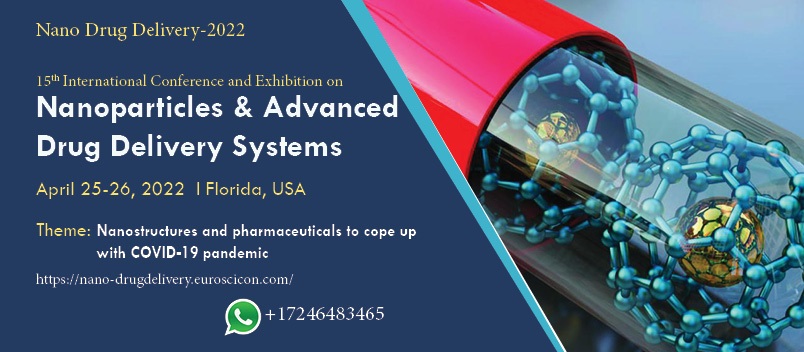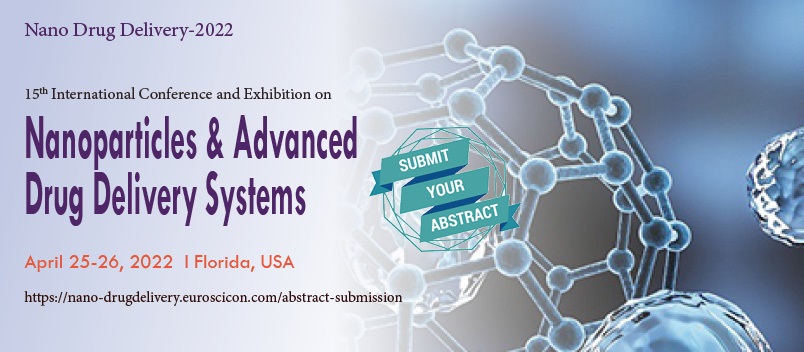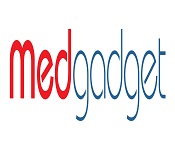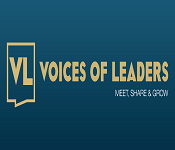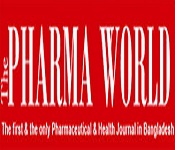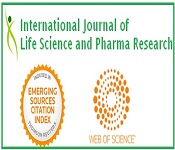NANO DRUG DELIVERY - 2022
ABOUT CONFERENCE
Welcome…!!!
EuroSciCon takes the pleasure of inviting people from all over the world to attend the "15th International Conference and Exhibition on Nanoparticles & Advanced Drug Delivery Systems" which is going to be held during April 25-26, 2022 in Florida, USA. The conference involves Plenary talks, Keynote presentations, Oral talks, Poster presentations, and Exhibitions.
It is estimated that the overall market size of Nanomedicine and Advanced Drug Delivery would be $755.3 billion with a 60/40 split between nanomedicine and advanced drug delivery. In addition to this, the developing new targeted delivery mechanisms may create more value for the companies and the entrepreneurs.
Nanomedicine and drug delivery addresses one of the greatest difficulties in the post-genomic time of the 21st century – making essential associations among the academics and the industrial professionals as well.
To address these difficulties, the field of Nanomedicine and advanced drug delivery has experienced exponential development amid the last 5 years. Innovations, for example, Design of Nanodrugs, Drug targeting and design, Nanomaterials for Drug Delivery, Personalized Nanomedicine, Routes of drug administration, Nano Pharmaceutical Industry, Novel and Smart drug delivery system, Nanotechnology and Biomedical applications, Regenerative Medicine and Tissue Engineering, Regulatory Aspects Towards Approval of Nanomedicine, Application of nanotechnologyfor treatment of cancer, Market processing and drug delivery etc., have changed the world of Nano pharmaceutics and advanced drug delivery system to a great way that brought about a great change in the world of pharmaceutical sciences.
There is a strong market for Nano pharmaceutics and drug delivery in Europe. The drug delivery technology have grown remarkably from basic drug reformulation and release technologies, to advanced stages. The nanorobotics market in Europe is estimated to grow at the highest CAGR during the forecast period. The high growth of the market here can be attributed to the increased aging population and rise in governmental healthcare expenditure. Also, Europe was among the most primitive regions to recognize the potential of nanorobotics
Drug development and formulation will show steady and constant growth at 20.7%. Nanoparticles for their use in diagnostic imaging will continue to show healthy growth at 20.1%. The global market for Nano devices and Nano machines is expected to grow from $736.1 million in 2018 to $1.3 billion in 2023 and then to $2.7 billion in 2028, at an overall annual growth rate (CAGR) of 11.6% from 2018 to 2023 and 16.0% from 2023 to 2028. The global Nano pharmaceutical drugs market is expected to grow over $79.29 billion by 2026, with a CAGR of 8.12%, during the period from 2018 - 2026.
Why exhibit?
- Make sales
- Debut new product
- Profile your brand
- Meet new business partners and suppliers
- Develop key relationships and Educate healthcare
- Pharma and biotech institutions and academia.
Who you will meet?
- Drug Delivery
- Drug Development
- Process R&D
- Bio manufacturing
- CMC
- Delivery Devices
- Formulation
- QbD
- Analytical Development
- Bioavailability
- New Products
- Pre-Formulation
- Nanotechnology
- Manufacturing
- Product Enhancement
- Stability
- Solid State Chemistry
Who should sponsor?
- Analytical Services
- Full service CRO
- Drug Delivery Technologies
- Preformulation testing
- Formulation Development
- CMO
- Software
- Get to the depth of why formulation and delivery strategies fail.
- Overcome the challenges before looking for concrete solutions.
- Identify how advances in the pharmaceutical sector are impacting both large and small molecule drugs.
- Explore tried and tested routes to improve bioavailability.
- Think in a logical way about how to develop the right formulation and delivery strategy with a strong clinical, scientific, and commercial mind set.
- Discover the recent innovations in drug delivery devices.
- Get inspired by innovative case studies and realise the potential impact of Nano pharmaceutics and drug delivery on your formulation or delivery processes.
- Occupy yourself in the exciting event format, with multiple conference tracks, round tables, panel discussions, symposiums, and speed networking.
- Share insights, experiences, and strategies in the interactive sessions or among the peers.
- Hear wide perspectives at one place given by the speakers belonging to various institutions, fields, organisations, and companies.
- Get an idea of how scientific formulation advancements are being implemented in practice.
SESSIONS AND TRACKS
Track 01: Cancer and Nanotechnology
Nanotechnology can probably build the selectivity, organic methodologies and power of concoction for stimulating the death of the diseased cells while limiting damage to non-malignant cells. Materials on the nanoscale are progressively being focused to malignancy cells with extraordinary specificity through both active and passive targeting. Chemotherapeutics in general cause harm to the immune system and alternative organs due to their nonspecific targeting, absence of solvency, and failure to enter the tumour centre bringing about weakened treatment with decreased dosage and low survival rate. Nanotechnology aids in the rapid and sensitive detection of cancer-related targets, enabling scientists to detect changes at the molecular level even if they occur in a small percentage of cells. Additionally, Nanotechnology also has the potential to generate unique and extremely effective therapeutic agents.
Track 02: Nanomedicine
Nanomedicine involves the usage of nanoscale materials (biocompatible nanoparticles and nanorobots) for the purpose of examination or incitation in a living structure. This evolving method has the ability to dramatically change medical science. Current challenges for nanomedicineinclude understanding the issues related to lethality and environmental impact of nanoscale materials, preparation of nano-prescriptions and its application. Researches that are being done give a wide audit of magnetic nanoparticles, silver nanoparticles, and gold nanoparticles with a special focus on the synthesis, functionalization and medicinal uses of these particles.
Track 03: Design of Nano drugs
Nano drugs sensational advances in the field of nanotechnology and nanoscience are combined by energizing advancement in de novo design of nano sized drugs. Nanoparticles with their structural and electrical properties turned out to be perfect contender for high viability nanomedicines in both diagnostics and therapeutics. Nano particles are categorized as one dimension, two dimension, and three dimension and each vary in their fabrication technique. Challenges pertaining to the design of nano drugs incorporate system of drug loading and discharge, safety issues and so on.
Track 04: Drug Targeting and Design
The main objective in drug design is to foresee whether a given particle will bind to a target and if so how unequivocally. Molecular mechanics or molecular dynamics are regularly used to predict the conformation of the little particle and to model conformational changes in the biological targets that may happen when the little molecules ties to it. The remedial reaction of a drug depends on the binding capacity of the drug molecules to the cell surface receptor binding sites in a concentration dependant manner.
Track 05: Novel Drug Delivery Systems
Drug delivery is the way of managing a drug or pharmaceutical product, so as produce the definite therapeutic impact. The concept of drug delivery is critical, as it has noteworthy impact on drug efficacy. Novel drug delivery system (NDDS) includes consolidating polymer science, pharmaceutics and molecular biology. Novel drug delivery systems are outlined in view of physical and biochemical mechanisms. Physical mechanisms or controlled drug delivery system incorporates dissolution, osmosis, and diffusion and so on. Biochemical mechanism incorporates gene therapy, liposomes, nanoparticles, monoclonal antibodies, microemulsions and so on. Few examples of drug delivery system (DDS) includes Transmucosal, Sonophoresis, Micelle, Lymphoid, Insitu Emulgel, and Hydrogel drug delivery system (DDS).
Track 06: Routes of Drug Administration
Route of administration refers to a path in which a drug is taken into the body. It is categorised based on the route in which a drug is administered (oral or intravenous (IV)) and the location at which a drug is applied i.e., topical (transdermal and transmucosal). Route of drug administration mainly focuses at developing novel routes to minimize side effects rather than common routes by which a drug is brought into contact with the body. Over the past 20 years, more advancements are being carried out in pharmaceutical industry especially in the field of formulation n. The discovery of alternative methods of drug administration enhanced the ability of the clinicians to manage the disease related problems.
Track 07: Pharmaceutical Nanotechnology
Nanotechnology has become a fundamental component of pharmaceutical sciences. It finds numerous applications in pharmaceutical formulation design and drug delivery systems in upgrading the execution of medicines. A significant number of nano based medications like Nano suspensions, Nano emulsions, and Nano micelles are being formulated. The medication conveyance framework emphatically impacts several parameters like the rate of ingestion, digestion, dispersion, and discharge of the medication or other related compound substances in the human body. Notwithstanding this the medication conveyance framework additionally enables the medication to tie to its objective receptor and impact that receptor's signalling and activity.
Track 08: Nanomaterials for Drug Delivery
Nanomaterials vary fundamentally from different materials because of the accompanying two noteworthy primary factors: the expanded surface zone and quantum impacts. These elements can improve properties, for example, reactivity, quality, electrical characteristics and in vivo behaviour. Nanotechnology and nanoscience are generally observed as having an awesome potential to bring advantages to numerous ranges of research and applications. The utilization of nanotechnology in the field of medicinal services has gone under awesome consideration as of late. There are numerous medications today that take a considerable measure of time and are exceptionally costly. Utilizing nanotechnology, considerably less expensive medications can be created. The real difficulties in the medication delivery are the choice of sheltered and biocompatible nanocarriers, mechanism for drug delivery, and solubilisation procedures.
Track 09: Nanotechnology and Biomedical Applications
Introduction of functionalised and modified nanostructures in biomedical applications has resulted in an increased rate of research interest in the recent years. Metallic, composite, ceramic, and polymeric nanomaterials are investigated to find out their biomedical applications in novel tissue engineering, targeted drug delivery, and biosensors etc. In the present scenario, there is an increased demand for designing of nanotools to respond to the biological problems and also for the preparation of more efficient approaches. In the fields of tissue and implant engineering, specific properties of the nanomaterials at their nanoscale dimension like wide surface area and fine surface roughness are known to yield a good biological response of the osteogenic cells. Nanotechnology also finds its application in dentistry, biosystems, respiratory diseases, Genetic nanomedicine etc.
Track 10: Personalized Nanomedicine
Personalized medicine means to individualize chemotherapeutic intercessions on the basis of ex vivo and in vivo data on patient-and disease-specific characteristics. The origin of personalized medicine resulted in the birth of different fields such as pharmacogenomics,proteomics, and metabolomics in the early 2000’s. This enabled the genetic study of every individual. It mainly aims at the development of patient specific treatment considering the genotype, phenotype and environmental factors that can influence the efficacy and safety of the therapy. This has experienced an exponential increase as it created an opportunity to treat every individual or a group of individuals who share common characteristics by taking the specific changes that have occurred at their genomic level. Even if the availability of nanomedicine products is high, not even a single one is designed as a personalized medicine because of the decreased number of publications concerning the personalized medicine.
Track 11: Drug Delivery Research
Drug delivery describes a tactic approach of delivering medicine or different xenobiotics to their site of action inside an organism, with the goal of achieving a therapeutic outcome. Alterations in pharmacodynamics and pharmacokinetics necessarily concern the drug delivery. With the use of various drug delivery systems, different parameters like drug absorption, distribution, metabolism, and clearance are compared to ancient dosing to demonstrate helpful outcomes such as short, long biocompatibility of drug delivery systems as well as the host response. The design and development of novel drug delivery systems, with attention on their application to disease conditions, diagnosis, and treatment is of great importance. Biomaterials with growth factors for stem-cell differentiation in regenerative medication and tissue engineering are being employed.
Track 12: Drug Delivery Equipment’s and Machinery
Equipment and Machinery which are required for the process of Drug Delivery involves Laboratory equipment's, Analytical equipment's, Auto Injectors, Semi-Automatic, R&D Equipment, Large volume Production Machineries and Drug Delivery Pilot hardware'sand so on. The drug delivery technology market is likely to reach USD 1,504.7 Billion by 2020 from USD 1,048.1 Billion, growing at a CAGR of 7.5% from 2015 to 2020. Increased prevalence of chronic diseases, growth of the biologics market, new product launches, drug innovation and technological advancements are raising the growth of this market. On the other hand, patent expiry and patent cliff, increase in the number of injuries and side effects, are delaying the growth of this market.
Track 13: Smart Drug Delivery Technology
Pertaining to the rare advances in biomedical nanotechnology , customary drug delivery systems (DDSs) have been included into smart DDSs inorder to enhance the responsive characteristics. The smart drug deliverysystem is used to convey drugs to the host. Organic data which is identified by biological sensors is examined and then drug delivery system is impelled to convey the drugs in accordance to the data. The framework uses different products like MEMS(Microelectromechanical system) or NEMS(Nanoelectromechanical system) innovation based drug pumps, micro pumps, miniaturized needles, micro-osmotic pumps, and nano-pumps. MEMS based drug delivery system aids in providing an adequate treatment by permiting precise dosing with more viability and adequacy. The application of MEMS for drug delivery through biocapsules, microneedles, and micropumps bids a less obtrusive drug therapy and improves the quality of life of the patients. It likewise incorporates sensors or communication frameworks to remotely actuate or control the pumps.
Track 14: Regenerative Medicine and Tissue Engineering
Regenerative medicine and tissues engineering are the branches of biomedical engineering. Tissue engineering and regenerative medicines are involved in the regeneration or replacement of cells, tissues or organs to revive traditional biological function. Tissue engineering could be an aggressive space of analysis that aims to make tissue equivalents of blood vessels, heart muscular tissue, nerves, cartilage, bone, and alternative organs for replacement of tissue either broken through sickness or trauma. As a knowledge domain field, principles from biological, chemical, electrical, materials science, and engineering are used in analysis and development.
The global Regenerative medicine market is estimated to reach USD 38.70 Billion by 2021 from USD 13.41 Billion at a CAGR of 23.6% from 2016 to 2021. The major factors that are raising the growth of this market are government and private funding in order to support the development of regenerative medicine, decrease the prevalence of chronic diseases and genetic disorders.
Track 15: Regulatory Aspects Towards Approval of Nanomedicine
Biomaterials and nanotechnology are the most promising tools that overcome the drawbacks mostly associated with non-specific effects of customary therapeutic approaches. Nonetheless, the extensive use of nanomedicines requests a significant learning and portrayal of these mind boggling items. The properties of the nanomaterialsshould be widely comprehended to keep away from unpredicted consequences for patients, for example potential immune reactivity. Research as well as pharmaceutical organizations has been uniting researchers, controllers, industry, more frequently in recent years, patient representatives and patient support establishments. To effectively upgrade the advancement of new technologies, enhanced systems look into corporate associations and coordinated research devices, managing suitable translational necessities going for clinical improvement, and proactive administrative arrangements are fundamental sooner rather than later.
Track 16: Vaccine Design and Delivery Technology
Vaccines have long been used since ages to fight against infectious disease; however the last decade has witnessed a revolution in the approach to vaccine design and development. Immunization Drug Delivery is a multidisciplinary scientific field that is experiencing quick improvement at present. The overall need of vaccines that are steady, sparing, and can be given in less dosages has been increasing. A hypothetical vaccine may not be cogent unless formulated and delivered relevantly. Critical to the accomplishment of a vaccine is the conveyance technique that will be utilized. At present, various techniques involving DNA vaccines, adjuvants, microparticles and transgenic plants are being developed and evaluated. There has been an increasing emphasis in the field of vaccines on the need for improved safety and efficacy against particularly insidious pathogens. More recently, the threats of bio-terrorist attacks have been added as an even sense of urgency to these efforts.
Track 17: Drug Delivery and Device Development
The use of therapeutic devices and different strategies of drug delivery continues to evolve and increase. Specialised tools known as Drug Delivery devices are those which are used for the delivery of drugs or therapeutic agents through a selected route of administration. Such devices are used as a part of one or a lot of medical treatments. There are many medical devices designed for drug delivery through the respiratory organ and nasal routes. These routes are of interest for native delivery, as in asthma attack, however additionally for speedy delivery of medicationto the system circulation and direct delivery to the central nervous system.
Track 18: Recent Advances in Drug Delivery
Simplicity of drug administration, safety, affordability and effectiveness are the most important issues in pharmacotherapy resulting in exploration of higher drug delivery systems. Drug targeting to specific organs and tissues has become one in all the essential endeavours of the century since the utilization of drugs in standard dosage forms typically involves difficulties in achieving the target site at the acceptable dose during or after a definite time. Subsequently, the look for new drug delivery approaches and new modes of action represent one of the frontier research areas. New drug delivery systems incorporates lipidic, proteic and polymeric technologies to produce new sustained drug delivery with higher body distribution, drug protection from harsh external surroundings and avoidance of drug clearance. Several of these technologies have reached the market thus proving the advantages of those new carriers.
Track 19: Major Challenges in Drug Delivery
There are several biochemical limitations that upset effective drug delivery. Major Challenges in Drug Delivery System involves the delivery of ineffectively dissolvable drugs and bioavailability obstacles for inadequately solvent clinical applicants. Self-emulsifying drug delivery system (SEDDS) have a supreme potential in increasing the oral bioavailability of poor water-soluble drugs. There are a few Novel methodologies in the delivery which oversees the bioavailability obstacles and aids in the rationale formulation design of poorly soluble drugs. At present the interest towards non-invasive drug-delivery methods has been increasing.
Now a days, biopharmaceuticals generate global income of $163 billion, making up about 20 percent of the total pharma market. As of now, it’s the fastest-growing part of the industry. The current annual growth rate of biopharmaceuticals more than 8 percent is double to that of conventional pharma, and is expected to continue in the future as well.
Track 20: Drug Delivery Companies and Markets
Increase in chronic diseases, an increased demand for biologics, advancement of technology, and new product launches are some of the key factors which drive the evolution of the drug delivery technology market. Moreover, self-administration, residential care, increased demand for biosimilars, and generic medicine, supply vital growth opportunities for player operative within the market. On the other hand, risk of needle-stick injuries and side effects of medication might hinder the expansion of the market.
The global income for advanced drug delivery systems is expected to be $173.8 billion in the year 2019, demonstrating a compound annual growth rate (CAGR) of 2.8%.
Eminent personalities in the drug delivery technology market include Johnson & Johnson, Inc. (U.S.), Pfizer, Inc. (U.S.), F. Hoffman-La Roche (Switzerland), Bayer AG (Germany), 3M Company (U.S.), Merck & Co., Inc. (U.S.), Dickinson and Company (U.S.), Novartis AG (Switzerland), Becton, GlaxoSmithKline plc, (U.K.), Sanofi (France), and Antares Pharma.
Track 21: Nano Pharmaceutical Industry and Market
Nanopharmaceuticals is an emerging field which offers the capacity to differentiate the health problem at a considerably early stage and its diagnostic applications could expand upon conventional techniques using nanoparticles. Nano-empowered medical items have had their effect on the areas such as cancer, CNS diseases, cardiovascular diseases, and infection control. While nano-upgraded drug delivery items are now on boom, more progressed nanotech-based medical gadgets are still being developed, although some are at the clinical testing stage. A large portion of the money being spent on the more extensive field of nanotechnology R&D originates from government and built up enterprises. In the field of nanomedicine, pharmaceutical and specialist organizations are at the front line of research especially focusing on the therapeutic uses of nanotechnology.
Track 22: Veterinary Drug Delivery
Drug Delivery research in the veterinary species incorporates unique challenges whilst providing opportunities for advancement in the health care of both animals and humans. In the field of veterinary pharmaceutics, there is great diversity in the animals that require treatment and the type of therapeutic agents to be delivered.
There is considerable scope for formulationscientists to provide valuable input into researching and developing drugs and delivery systems for application in veterinary medicineand to collaborate with animal health researchers in related disciplines. It is hoped that this special theme issue on veterinary drug delivery may stimulate new endeavours in this fascinating area.
MARKET ANALYSIS
NANOPHARMACEUTICS AND DRUG DELIVERY MARKET:
Technological innovations in the healthcare system have played a crucial role in development of new products. Among the numerous advancements witnessed by the industry, Nano pharmaceuticals can provide rapid and sensitive detection of cancer-related targets, thus enabling the researchers to detect molecular changes even when they occur only in a small portion of cells. Nanotechnology when combined with healthcare has the ability to generate unique and highly effective therapeutic products. The recent advancements in the pharmaceutical industry, like drug delivery at nano and microscopic level, advancement in regenerative medicine, and genomic technologies investment in precision medicine have led to big revolutions in the field of pharmaceutical research.
GLOBAL MARKET OF NANOPHARMACEUTICS:
Nano pharmaceuticals provide new and promising pathways to fight genetic diseases and reduce the overall global economic burden. The major factors that are driving the growth of this market are government and private funding to support the development of regenerative medicine, increasing prevalence of chronic diseases and genetic disorders, raise in the global healthcare expenditure, and rapid growth in the aging population. The main plan of the pharmaceutical and biotechnology companies is to characterize the Nano medicine through research and development. The main idea is to perform the entire process within the company, with the help of an expertise team of researchers. Business models between companies and research partners like universities, or academic laboratories for the depiction of nanomaterial, would help reduce the company's cost. Other options comprise of research institutes licensing out the manufacturing and commercialization of the Nano medicine-based product to larger companies.
Basic biotechnology research incomes will rise due to the quest to find additional nanoparticle applications, as more drugs become successfully distributed by these carrier systems. Drug development and formulation will show steady and constant growth at 20.7%. Nanoparticles for their use in diagnostic imaging will continue to show healthy growth at 20.1%. This would finally result in a need to develop more definitive nanoparticle markets for disease diagnosis. Till date, drug delivery has been the main near-term chance for medical nanotechnology.
The global market for Nano devices and Nano machines is expected to grow from $736.1 million in 2018 to $1.3 billion in 2023 and then to $2.7 billion in 2028, at an overall annual growth rate (CAGR) of 11.6% from 2018 to 2023 and 16.0% from 2023 to 2028.
According to a new market intelligence report given by BIS Research on 'Global Nanopharmaceutical Drugs Market - Analysis and Forecast, 2018-2026', the global Nano pharmaceutical drugs market is expected to grow over $79.29 billion by 2026, with a CAGR of 8.12%, during the period from 2018 - 2026. The growth of the market is maintained due to a remarkable growth in the use of liposome and polymer drug delivery systems.
NANOPHARMACEUTICAL MARKET IN EUROPE:
For the past few years, European drug delivery technology have grown remarkably from basic drug reformulation and release technologies, to advanced stages that hold a huge potential for the effective transfer of biological and novel drugs.
The Nano robotics market in Europe is estimated to grow at the highest CAGR during the forecast period. The high growth of the market here can be attributed to the increased aging population and rise in governmental healthcare expenditure. Also, Europe was among the most primitive regions to recognize the potential of Nano robotics; therefore, a high level of public and private funding contributes to the high growth of Nano robotics in Europe. The market in Europe is closely followed by APAC, in terms of CAGR and expected to grow at the second-highest rate in the overall market, by region.
Key companies in the European drug delivery technology market:
3M Company (U.S.)
Alkermes (Ireland)
Aptalis Pharma, Inc. (U.S.)
Baxter International, Inc. (U.S.)
Becton Dickinson & Co. (U.S.)
Catalent Pharma Solutions (U.S.)
The Dow Chemical Company (U.S.)
Endo Pharmaceuticals (U.S.)
Johnson & Johnson (U.S.)
Nektar Therapeutics (U.S.)
SkyePharma PLC (U.K.)
Ypsomed Holding AG (Switzerland)
Major Industries related to Nano pharmaceutics and Drug delivery includes:
Johnson & Johnson
Pfizer
Roche
Merck & Co.
Sanofi
GlaxoSmithKline
Gilead Sciences
Bayer
AstraZeneca
Boston Scientific
Amgen
Teva
Eli Lilly
Bristol-Myers Squibb
Elan
Cardinal Health
RELATED INTERNATIONAL SOCIETIES FOR PHARMACEUTICALS
International Pharmaceutical Federation (FIP)
European Association of Employed Community Pharmacists in Europe (EPhEU)
European Pharmaceutical Union (EPU)
Pharmaceutical Group of the European Union (PGEU)
American Society for Nano medicine
American Association of Colleges of Pharmacy (AACP)
American Pharmacists Association (Alpha)
American Society of Consultant Pharmacists (ASCP)
American Society of Health-System Pharmacists (ASHP)
American College of Clinical Pharmacy(ACCP)
National Pharmacy Association
Pharmaceutical Society of Northern Ireland
Royal Pharmaceutical Society (RPS)
Pharmaceutical Society of Australia
The Pharmacy Guild of Australia
Institute for Molecular Manufacturing(IMM)
International Association of Nanotechnology (IANT)
RELATED INTERNATIONAL SOCIETIES FOR PHARMACEUTICALS
Society for biomaterials
Washington State Pharmacy Association
Inhalation Drug Delivery Association
International society of drug delivery sciences and technology.
American Association of Pharmaceutical Scientists
Japanese Society of Drug Delivery Systems
Parenteral Drug Association
International Association for Pharmaceutical Technology
Others
OTHERS
Nano medicine is a branch of science that uses Nanotechnology for the prevention and treatment of diseases. It aids in the early detection and helps to improve diagnosis, treatment and follow-up of many diseases. It involves the use of nanomaterial like biocompatible nanoparticles and nano robots for the purpose of diagnosis, delivery, or actuation. At present most of the nano products are under clinical trials, which can be applied in the fields of cardiovascular, neurodegenerative and musculoskeletal system.
Nano pharmaceuticals may include contrast agents which allow the clinicians to identify the tumor or a disease with a body scan i.e., Magnetic Resonance Imaging (MRI), X-Ray Computed Tomography (CT) or Positron Emission Tomography (PET). Moreover, nanotechnology can help to design better drugs which can be administered easily, i.e., oral instead of intravenous injections. It enables an extended drug release, thus reducing the drug concentrations.
Nano drug delivery or Nano delivery system is a rapid developing science that uses materials of Nano scale range to deliver drugs to targeted sites. Nano materials are those which range between 1 to 100 nm. Being Nano sized, these particles penetrate the diseased tissue allowing the easy uptake of the drug by the tissue. Finally, they improve the disease condition with negligible side effects.

